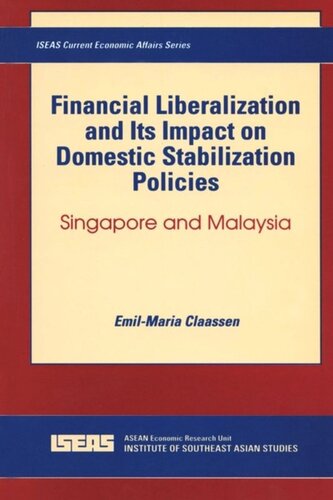

Most ebook files are in PDF format, so you can easily read them using various software such as Foxit Reader or directly on the Google Chrome browser.
Some ebook files are released by publishers in other formats such as .awz, .mobi, .epub, .fb2, etc. You may need to install specific software to read these formats on mobile/PC, such as Calibre.
Please read the tutorial at this link: https://ebookbell.com/faq
We offer FREE conversion to the popular formats you request; however, this may take some time. Therefore, right after payment, please email us, and we will try to provide the service as quickly as possible.
For some exceptional file formats or broken links (if any), please refrain from opening any disputes. Instead, email us first, and we will try to assist within a maximum of 6 hours.
EbookBell Team

4.3
48 reviewsFull convertibility on the capital account brings with it the danger of real appreciation of the domestic currency as a consequence of additonal net capital imports. The real appreciation, in its turn, disfavours exports. At the end of the 1970s, Singapore and Malaysia had liberalized almost completely their international capital flows. Both countries experienced approximately the same growth and inflation rate. During the first hald of the 1980s, both currencies went through a considerable appreciation of their real efective exchange rates, since at that particular period both pegged their currencies to the U.S. dollar. In 1985, both were "an island of recession" when industrialized Asian and other developing countries passed through an economic boom. The recession was an outcome of their domestic stabilization policies. Singapore, which developed towards an international financial centre, had to assure the "quality" of its domestic currency in order to overcome the regualtory and fiscal advantages of Asian dollar deposits. The Singapore dollar became misaligned since financial priorities overruled commercial considerations. In contrast, Malaysia's real effective appreciation was the outcome of its huge government expenditures since it fell into the trap of the Dutch disease after the commodity price boom of 1979/80.